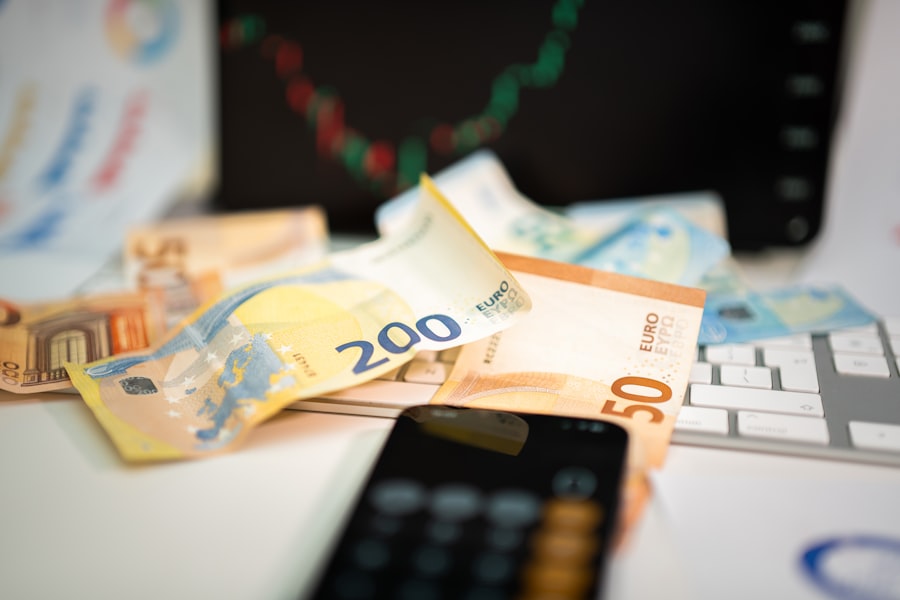In an era where financial literacy is paramount, budget apps have emerged as indispensable tools for managing personal finances. With the proliferation of smartphones, particularly Android devices, these applications have made it easier than ever for users to track their spending, set financial goals, and gain insights into their financial habits. The convenience of having a budgeting tool at one’s fingertips allows individuals to make informed decisions about their money, ultimately leading to better financial health.
The rise of budget apps can be attributed to the increasing complexity of personal finance management. Traditional methods, such as pen-and-paper budgeting or spreadsheets, often fall short in providing real-time insights and ease of use. Budget apps not only streamline the process of tracking expenses but also offer features like bill reminders, spending alerts, and even investment tracking.
As more people seek to take control of their finances, the demand for effective budgeting solutions continues to grow, making it essential to explore the various options available on the Android platform.
Key Takeaways
- Budget apps for Android are a convenient way to track and manage your finances on the go.
- When looking for a budget app, consider features such as expense tracking, budget goal setting, bill reminders, and customizable categories.
- Some of the best free budget apps for Android include Mint, Goodbudget, and Wallet.
- For those willing to invest in a budget app, options like YNAB (You Need a Budget) and PocketGuard offer advanced features and personalized support.
- When choosing the right budget app for your needs, consider your financial goals, spending habits, and the app’s user interface and compatibility with your banking institutions.
Features to Look for in Budget Apps
Syncing with Bank Accounts and Credit Cards
One of the most critical aspects is the ability to sync with bank accounts and credit cards. This feature allows users to automatically import transactions, reducing the manual entry burden and ensuring that spending data is always up-to-date.
Customizable Budgeting Categories
Another important feature is customizable budgeting categories. A good budget app should allow users to create categories that reflect their unique spending patterns, whether it’s groceries, entertainment, or savings. This customization enables individuals to allocate their funds more effectively and identify areas where they may be overspending.
Visual Representations of Spending
Visual representations of spending through graphs and charts can help users quickly grasp their financial status at a glance, making it easier to adjust their budgets as needed.
Best Free Budget Apps for Android

For those looking to manage their finances without incurring additional costs, several free budget apps for Android stand out in the crowded marketplace. One notable option is Mint, which has gained popularity for its comprehensive features and user-friendly interface. Mint allows users to link their bank accounts and credit cards, automatically categorizing transactions and providing insights into spending habits.
The app also offers budgeting tools and alerts for upcoming bills, making it a robust choice for anyone seeking a free budgeting solution. Another excellent free option is YNAB (You Need A Budget), which focuses on proactive budgeting strategies. While YNAB offers a free trial period, it also provides a wealth of resources aimed at teaching users how to manage their money effectively.
The app encourages users to allocate every dollar they earn to specific categories, promoting a zero-based budgeting approach. This method can help individuals gain control over their finances and prioritize their spending in alignment with their financial goals.
Best Paid Budget Apps for Android
| App Name | Price | Rating | Features |
|---|---|---|---|
| YNAB (You Need A Budget) | 84/year | 4.7 | Bank syncing, goal tracking, debt paydown, reporting |
| Goodbudget | 6/month | 4.5 | Envelope budgeting, expense tracking, sync across devices |
| Wallet | 14.99 | 4.6 | Expense tracking, budget planning, bank syncing |
| Money Lover | 5.99/month | 4.5 | Budget planning, expense tracking, bill reminder |
While free budget apps can be highly effective, some users may prefer the additional features and support offered by paid options. One of the leading paid budget apps for Android is EveryDollar, which was developed by financial expert Dave Ramsey. EveryDollar employs a straightforward approach to budgeting by allowing users to create monthly budgets based on their income and expenses.
The app’s premium version includes features such as bank syncing and expense tracking, making it easier for users to stay on top of their finances. Another noteworthy paid app is PocketGuard, which simplifies budgeting by showing users how much disposable income they have after accounting for bills, goals, and necessities. The app’s unique “In My Pocket” feature provides a clear view of available funds, helping users avoid overspending.
PocketGuard also offers customizable categories and the ability to track recurring expenses, making it a versatile tool for those willing to invest in their financial management.
How to Choose the Right Budget App for Your Needs
Selecting the right budget app involves assessing personal financial goals and preferences. Users should begin by identifying what they hope to achieve with the app—whether it’s tracking daily expenses, saving for a specific goal, or managing debt. Understanding these objectives can help narrow down the options available in the market.
For instance, someone focused on long-term savings might benefit from an app that emphasizes goal-setting features, while another individual looking for day-to-day expense tracking may prioritize ease of use and real-time updates. Additionally, considering the app’s compatibility with existing financial accounts is crucial. Users should look for apps that support their banks and credit unions to ensure seamless syncing of transactions.
Furthermore, evaluating user reviews and ratings can provide insights into the app’s reliability and functionality. A well-reviewed app with a strong community can offer additional support through forums or customer service channels, enhancing the overall user experience.
Tips for Using Budget Apps Effectively

To maximize the benefits of budget apps, users should adopt certain best practices that enhance their effectiveness. One key tip is to regularly review and update budgets based on changing financial circumstances. Life events such as job changes, moving expenses, or unexpected bills can significantly impact one’s financial situation.
By revisiting budgets frequently—ideally on a monthly basis—users can ensure that their spending aligns with their current income and goals. Another effective strategy is to set specific financial goals within the app. Whether it’s saving for a vacation or paying off debt, having clear objectives can motivate users to stick to their budgets.
Many budget apps allow users to create savings goals and track progress over time, providing a sense of accomplishment as milestones are reached. Additionally, utilizing alerts and notifications can help users stay accountable by reminding them of upcoming bills or spending limits.
Common Mistakes to Avoid When Using Budget Apps
While budget apps can be powerful tools for financial management, there are common pitfalls that users should be aware of to avoid undermining their efforts. One frequent mistake is neglecting to categorize transactions accurately. Inaccurate categorization can lead to misleading insights about spending habits, making it difficult to identify areas for improvement.
Users should take the time to review transactions regularly and ensure they are categorized correctly to maintain an accurate picture of their finances. Another common error is failing to account for irregular expenses. Many individuals focus solely on fixed monthly bills while overlooking variable costs such as annual subscriptions or seasonal expenses like holiday shopping.
To avoid this oversight, users should create a comprehensive list of all potential expenses—both fixed and variable—and incorporate them into their budgets. This holistic approach ensures that users are prepared for unexpected costs and helps prevent overspending.
Conclusion and Final Recommendations
In conclusion, budget apps for Android offer a valuable resource for individuals seeking to take control of their finances in an increasingly complex economic landscape. With a variety of free and paid options available, users can find tools that cater specifically to their needs and preferences. By understanding key features to look for in these apps and implementing effective strategies for usage, individuals can enhance their financial literacy and achieve their monetary goals.
Ultimately, the choice of a budget app should align with personal financial objectives while considering factors such as ease of use and compatibility with existing accounts. By avoiding common mistakes and regularly reviewing budgets, users can leverage these digital tools to foster better spending habits and improve overall financial well-being. Whether one opts for a free solution like Mint or invests in a premium app like EveryDollar or PocketGuard, the journey toward financial empowerment begins with informed choices and consistent effort in managing one’s finances effectively.


